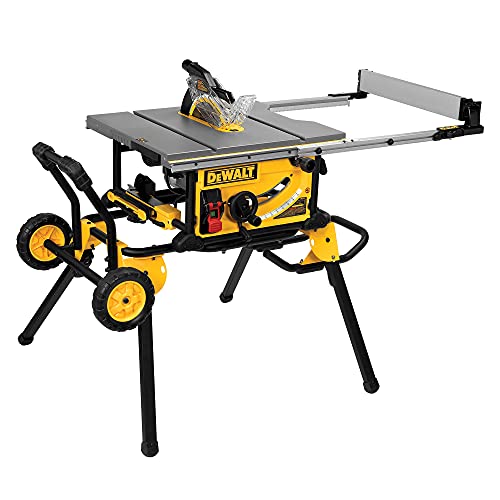Beautiful Plants For Your Interior
Beautiful Plants For Your Interior
Regular table saw maintenance is crucial to keep the tool safe and functioning properly. This upkeep includes cleaning the saw, inspecting parts for damage, adjusting the blade alignment, lubricating moving parts, and replacing worn-out components. Proper maintenance ensures the longevity of the saw while preventing accidents and errors.
Benefits of regular table saw maintenance:

A table saw is an essential tool used in woodworking to make precise cuts. It’s used in both commercial and DIY woodworking projects. However, to ensure the table saw functions efficiently and produces good results, it’s crucial to maintain and upkeep it regularly. Neglecting to maintain and care for a table saw may lead to serious consequences, including accidents, equipment damage, and reduced production efficiency.
Like any other tool, a table saw is subject to wear and tear with time. As the blade spins, it produces a lot of heat, which may cause the blade to warp or buckle. The drive belts, bearings, and gears may also wear out or get loose, leading to blade misalignment. Therefore, to keep the tool functioning correctly, you need to perform routine maintenance to keep the saw in optimal shape.
Routine maintenance not only keeps the blade running accurately but also increases the tool’s lifespan. A well-maintained table saw lasts longer than a poorly maintained one. By ensuring your table saw is appropriately maintained, you prevent expensive repairs or replacement costs that may result from a lack of maintenance.
Maintaining your table saw is easier than you might think. Here are some maintenance tips to help you keep your table saw in tip-top shape:
Regular cleaning is essential to maintain your table saw’s performance. After every use, make sure you clean the saw’s surface with a soft towel and mild detergent. Clean the blade, fence, and miter gauge thoroughly to prevent sawdust buildup, which can affect the saw’s accuracy. You also need to clean the area around the motor to prevent dust and debris from clogging the motor, leading to overheating.
Blade alignment is a crucial aspect of maintaining a table saw. Over time, the blade may become misaligned, leading to inaccurate cuts. You can check for blade alignment by using a combination square. Ensure that the blade is perpendicular to the table’s surface to get correct cuts.
A table saw has many moving parts that need lubrication to function optimally. These include the gears, belts, and bearings. Make sure you lubricate all the moving parts regularly to prevent wear and tear, reduce friction, and smooth operation.
A table saw has an electrical system that powers the motor. You need to check the electrical connections regularly to ensure they’re tight and secure. Loose connections may cause electrical shorts or lead to accidents, which may be fatal.
A table saw’s safety features are the most critical components of the machinery. Make sure you check the saw’s safety features regularly. Check the blade guard, riving knife, and anti-kickback pawls to ensure they function correctly. Safety features protect you from accidents and injuries.
Maintaining and upkeep of a table saw is essential for optimal performance and longevity. Routine maintenance of the saw not only keeps it running accurately but also reduces accidents caused by faulty equipment. In summary, clean the saw regularly, align the blade, lubricate moving parts, check electrical connections, and verify safety features to keep the saw in tip-top shape. By following these tips, you’ll ensure your table saw is in excellent condition, and it will serve you for many years.
Table: Comparison between maintaining and not maintaining a table saw.
| Aspects | Maintained | Not Maintained |
|---|---|---|
| Blade performance | Accurate cuts | Inaccurate cuts |
| Lifespan | Longer lifespan | Shorter lifespan |
| Repair costs | Lowered costs | Expensive repairs |
| Safety | Reduced accidents | Higher risks of accidents |
| Efficiency | High production efficiency | Low production efficiency |
Proper table saw maintenance ensures that the saw performs optimally, operates safely, and lasts longer. Neglecting maintenance can lead to decreased accuracy, safety hazards, and costly repairs or replacements.
Routine maintenance should be performed before and after each use. This includes cleaning the saw, checking the blade alignment, and inspecting the components for wear or damage. Additionally, a more thorough maintenance should be performed every six months to a year, depending on usage.
Common tasks include cleaning the saw and components, lubricating moving parts, checking and adjusting the blade alignment, replacing worn components, and tightening any loose screws or bolts.
Many maintenance tasks can be done by the user with the proper knowledge and tools. However, if there are any doubts or safety concerns, it’s best to consult with a professional or a manufacturer-certified technician.
Some common issues that can be resolved with proper maintenance include blade wobble, inaccurate cuts, poor dust collection, and motor problems.
Regular maintenance, proper use, and following safety guidelines in the manual are key to ensuring safe use of a table saw. This includes using the appropriate safety equipment, avoiding distractions while using the saw, and inspecting the components before use.
Regular maintenance ensures optimal performance, extends the lifespan of the saw, and helps avoid costly repairs or replacements. In addition, keeping the saw in good condition also improves safety and accuracy, making it a reliable tool for any woodworking project.